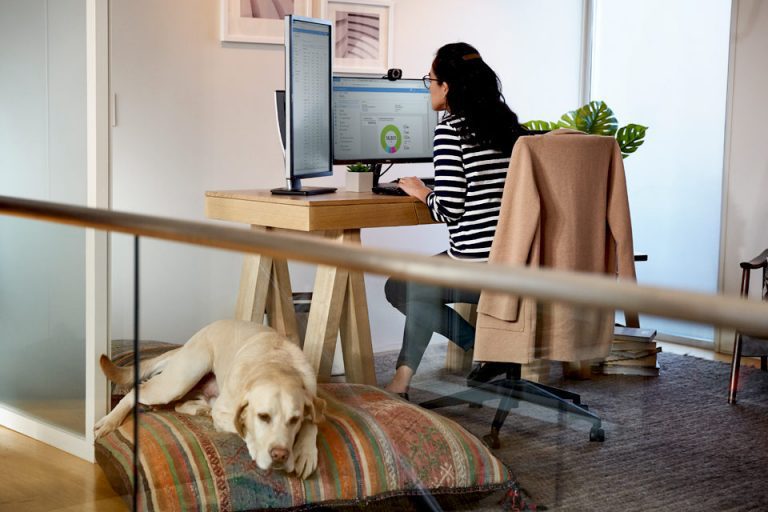Do you work remotely?
Discover the importance of team building in a remote work environment. Building trust and communication in virtual teams can be challenging, but it’s essential for success.
Overcome the obstacles of remote collaboration by implementing strategies that enhance team cohesion from a distance. Engage in innovative team building activities tailored for remote teams, and measure the impact of these efforts.
Strengthen your team and thrive in the world of remote work.
Benefits of Team Building in a Remote Work Environment
You’ll reap numerous benefits from actively participating in team building activities in a remote work environment.
First and foremost, team building activities help foster a sense of camaraderie and unity among remote team members. Through these activities, you’ll get to know your colleagues better, build trust, and strengthen relationships.
This, in turn, leads to improved communication and collaboration within the team. Additionally, team building activities can enhance problem-solving skills and creativity. Working together on challenges and brainstorming ideas can result in innovative solutions and fresh perspectives.
Moreover, participating in team building activities can boost morale and motivation, as it provides a break from the monotony of remote work and allows for some fun and relaxation.
Ultimately, actively engaging in team building activities in a remote work environment can create a more positive and productive work culture.
To help you build a remote work environment there are many tools such as Gloww available in the market.
Building Trust and Communication in a Virtual Team
To effectively build trust and communication in a virtual team, it is important to establish clear expectations and maintain regular and open lines of communication. This is crucial because without face-to-face interaction, it can be challenging to build trust and maintain effective communication in a virtual team setting.
By setting clear expectations, team members have a better understanding of their roles and responsibilities, which helps to avoid confusion and misunderstandings.
Regular and open communication allows team members to share ideas, provide feedback, and address any issues or concerns promptly. Building trust and communication in a virtual team requires effort and intentionality, but it is essential for the team’s success.
| Clear Expectations | Regular Communication | Open Communication |
| Establish roles and responsibilities | Schedule regular check-ins | Encourage open discussions |
| Define goals and objectives | Use collaborative tools for communication | Create a safe and inclusive environment |
| Provide clear guidelines and deadlines | Share progress updates | Foster a culture of transparency |
| Communicate expectations and feedback | Utilize video conferencing for face-to-face interaction | Encourage active participation |
| Clarify decision-making processes | Establish channels for informal communication | Promote active listening |
Overcoming Challenges of Remote Collaboration
To effectively collaborate with your remote team, it’s important to overcome the challenges of distance and lack of face-to-face interaction. One challenge you may face is the difficulty in establishing trust and rapport with your team members. Without regular in-person interactions, it can be harder to build personal connections and understand each other’s working styles.
Another challenge is the potential for miscommunication and misunderstanding. In a remote work environment, communication primarily relies on digital platforms, which can sometimes lead to misinterpretation of messages.
Additionally, coordinating schedules across different time zones can be a challenge, making it harder to find a time that works for everyone to meet and collaborate.
To overcome these challenges, it’s essential to prioritize clear and open communication, utilize video conferencing tools for virtual face-to-face interactions, and establish regular check-ins and feedback sessions to maintain alignment and foster collaboration.
Strategies for Enhancing Team Cohesion From a Distance
Building trust and fostering collaboration are key strategies for enhancing team cohesion from a distance. When working remotely, it’s important to establish a strong bond among team members to ensure effective communication and successful outcomes. Here are four strategies that can help enhance team cohesion in a remote work environment:
- Encourage regular check-ins: Schedule virtual meetings or video conferences to provide a platform for team members to connect and share updates. This helps in building relationships and fostering a sense of belonging.
- Promote open communication: Encourage team members to express their thoughts, ideas, and concerns openly. This creates an environment of trust and transparency, leading to improved collaboration and problem-solving.
- Foster virtual team-building activities: Organize virtual team-building activities such as online games, virtual happy hours, or virtual team lunches. These activities help in building rapport, boosting morale, and creating a sense of camaraderie among team members.
- Establish clear goals and expectations: Clearly define team goals, roles, and responsibilities. This ensures that everyone is on the same page and working towards a common objective, promoting unity and collaboration.
Innovative Team Building Activities for Remote Teams
You should regularly incorporate fun and engaging team building activities into your remote work environment to foster collaboration and boost team morale.
In a remote work setting, it’s important to find innovative ways to build strong relationships among team members. One activity you can try is a virtual escape room. This challenges your team to work together to solve puzzles and escape within a certain time frame.
Another option is a virtual scavenger hunt, where team members search their homes for specific items or complete tasks.
You can also organize virtual happy hours or coffee breaks, where team members can relax and socialize in a more informal setting.
These activities not only promote teamwork but also create a sense of camaraderie and connection among team members, even when physically apart.
Measuring the Impact of Team Building in a Remote Work Setting
By using surveys and feedback forms, you can effectively measure the impact of team building activities in a remote work setting. Here are four ways to measure the impact of team building in a remote work environment:
- Surveys: Conducting surveys before and after team building activities can provide insights into the team’s dynamics, collaboration, and overall satisfaction.
- Feedback forms: Implementing feedback forms allows team members to share their thoughts and opinions on the effectiveness of team building activities. This feedback can help identify areas for improvement and measure the impact on team cohesion.
- Performance metrics: Tracking key performance indicators such as productivity, communication, and problem-solving skills can help assess the impact of team building activities on individual and team performance.
- Team engagement: Monitoring team engagement levels through indicators like participation rates, active involvement in discussions, and attendance in team meetings can indicate the effectiveness of team building activities in fostering a sense of belonging and motivation.
Conclusion
In conclusion, team building is crucial in a remote work environment as it helps to foster trust, improve communication, and overcome challenges of remote collaboration.
By implementing strategies to enhance team cohesion and engaging in innovative team building activities, remote teams can strengthen their bonds and improve productivity.
Additionally, measuring the impact of team building efforts can provide valuable insights into the effectiveness of these initiatives in a remote work setting.
HR Future Staff Writer

























